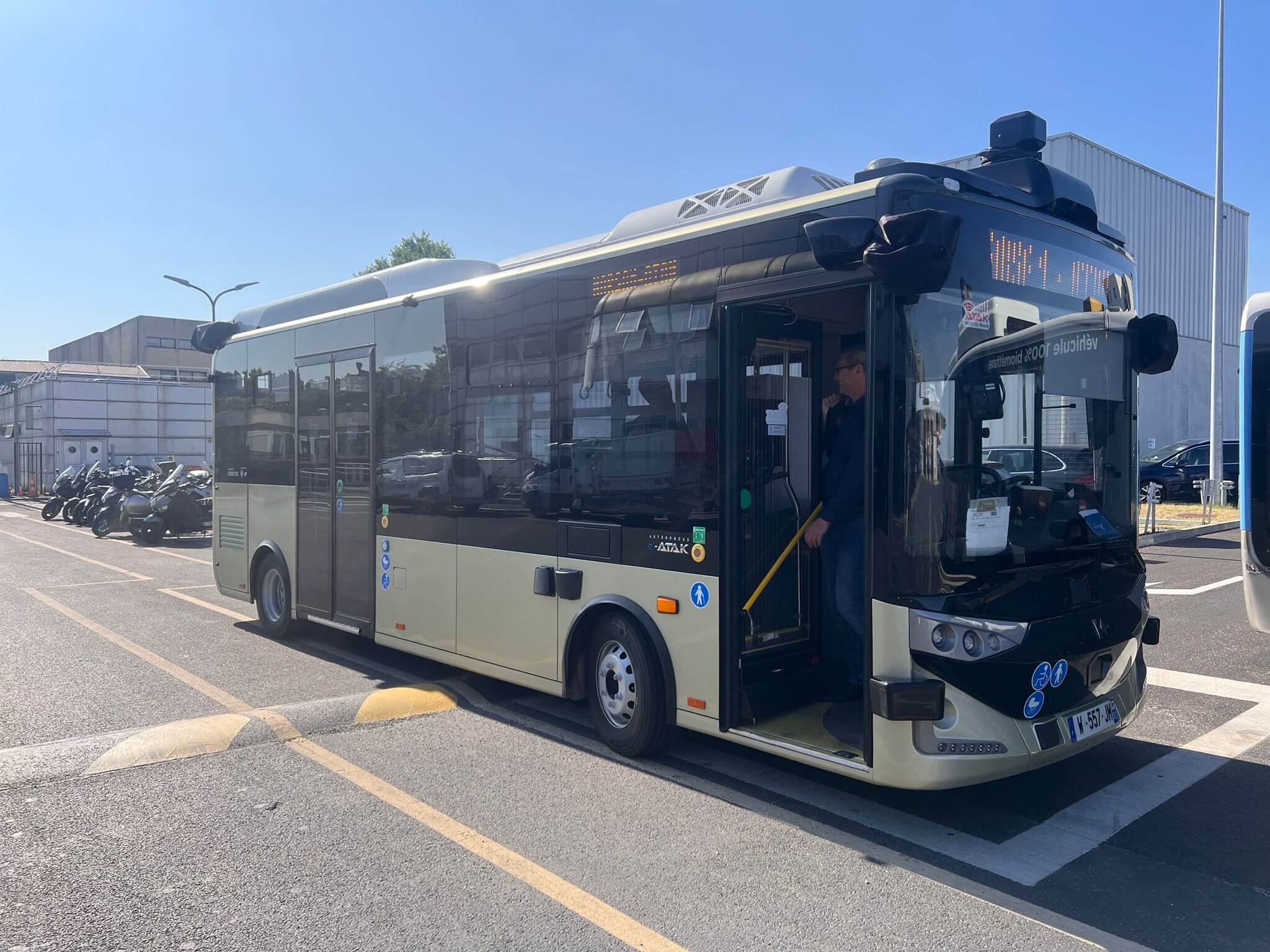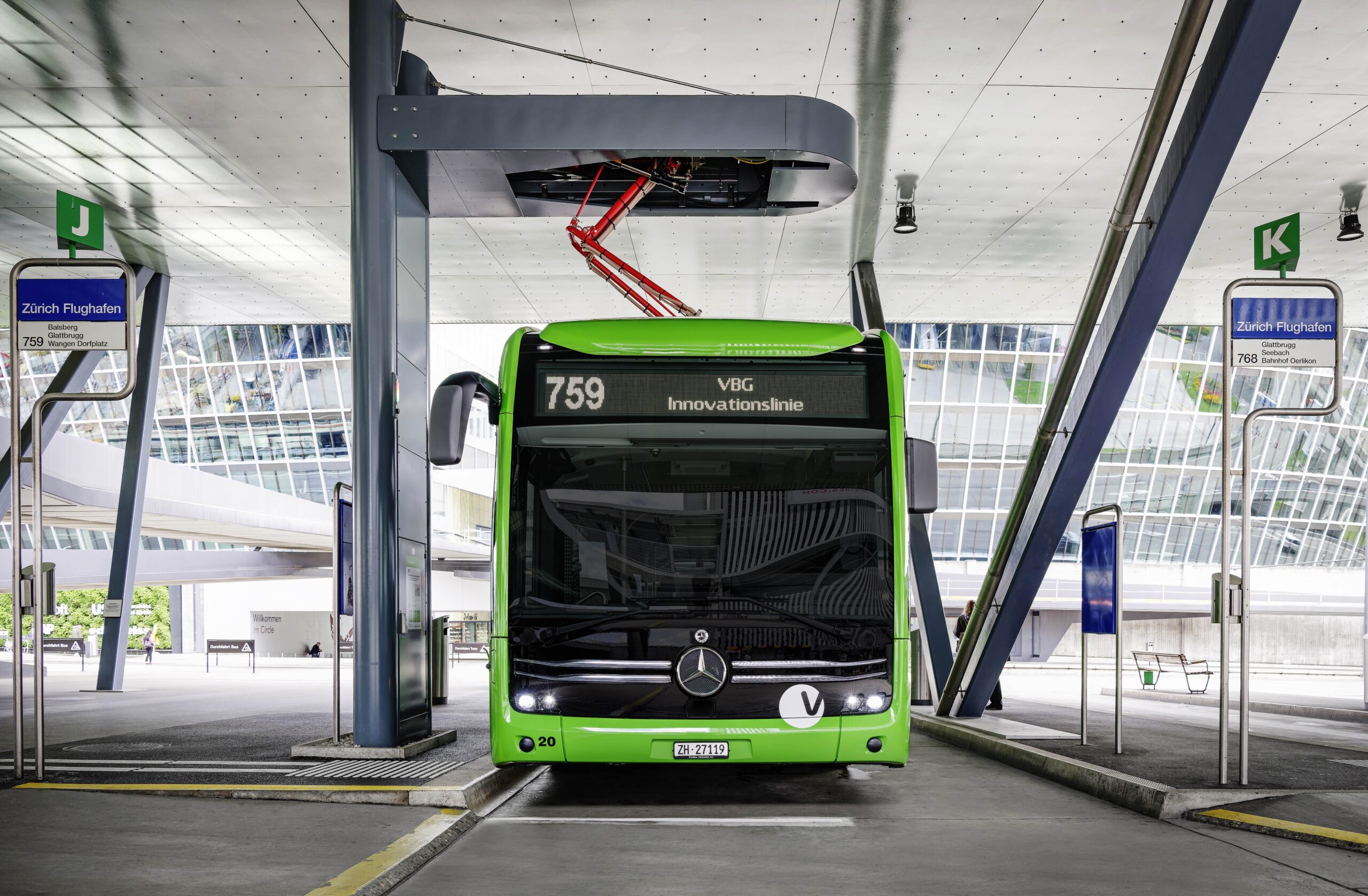Now Bus Drivers Have the Best Perspective: Camera View with a Bird’s Eye Perspective for Mercedes-Benz and Setra Buses
- A new camera system improves the bus driver’s view of pedestrians and cyclists
- An all-around, bird’s eye view with the 360-degree camera and 270-degree camera
- Available soon for numerous Mercedes-Benz and Setra model series
- Buses from Daimler Buses lead the way with vehicle safety systems
Once the ship’s look-out used to climb up into the crow’s nest. Today Mercedes-Benz and Setra buses can be optionally equipped with a 360-degree or 270-degree camera system. In both cases the objective is identical – to achieve the best possible all-around visibility for maximum safety, because pedestrians and cyclists can be perceived even when they are not in the driver’s direct field of vision or can’t be seen in the outside mirrors. This means increased support for drivers in their highly responsible jobs and protection for more vulnerable road users.

An All-Around, Bird’s Eye View with the 360-Degree Camera and 270-Degree Camera
New to vehicles from Daimler Buses are the optional 360-degree camera system for Mercedes-Benz and Setra solo buses in touring, inter-city and regular service operations and a 270-degree system in the Mercedes-Benz Citaro articulated bus. On the solo vehicle four cameras give an all-around view of the surrounding area (360 degrees), while on the articulated bus, due to the different articulation angles of the front and rear sections, three cameras give a lateral overview to the left and right of the rear section and to the rear (270 degrees).
Depending on the model, the front camera is mounted either below or above the windscreen, while both side cameras are located above the side windows. Just like the present reversing camera, the rear camera is mounted in the vicinity of the rear window. Thanks to this system pedestrians, cyclists and obstacles can also be observed in areas which would otherwise not be visible to the driver. Thus the system increases road safety as a possible collision can be detected and accidents prevented. As the vehicle pulls away, the camera system is automatically activated up to a speed of 35 km/h. It is also active at higher speeds when the turn signal indicator is actuated. As speed is reduced, the system also switches on automatically from 32 km/h. On a ten-inch monitor with a divided screen, the driver sees the bus from a bird’s eye perspective. A second image on the monitor is dependent on the driving situation: depending on which turn signal indicator is activated or the engaged reversing gear, it changes automatically to the appropriate side for example. A total of five views are available. Also drivers can switch the images manually when required. A corresponding menu is available for this on the screen. The driver can also use this to manually switch the monitor on or off.
Markings to indicate the front and rear edge of the bus as well as a stylised driving path facilitate orientation. The images provide a field of vision up to a distance of five to six metres which ensures that the neighbouring lane is also covered.
Available Soon for Numerous Mercedes-Benz and Setra Model Series
The new camera systems are expected to be available on request from the first quarter of 2022 for numerous buses: for the entire range of Mercedes-Benz low-floor Citaro including the eCitaro and Citaro Ü, for the new Mercedes-Benz Intouro inter-city bus and the high-deck Tourismo, the new Tourrider for North America and the Setra TopClass S 531 DT double-decker bus.
Buses from Daimler Buses Lead the Way with Vehicle Safety Systems
Thus buses from Mercedes-Benz and Setra yet again underline their leading role with regard to vehicle safety systems: no matter whether it’s Sideguard Assist the turning assistance system, Active Brake Assist the emergency braking system for inter-city buses and touring coaches or Preventive Brake Assist the active braking assistance system on city buses, the ESP Electronic Stability Program or the articulation limiter control ATC (Articulation Turntable Controller) for the articulated bus. Buses from Daimler Buses are without exception pioneers in terms of safety and assistance systems.
This also applies to passive safety should something untoward happen despite all of the precautionary measures. For ten years Daimler Buses has been voluntarily complying with the UN ECE-R 29 directive for all newly developed buses from both brands. Originally applicable to trucks, the directive is concerned with the driver’s survival space in the event of a frontal impact and is tested using the pendulum impact test. The collision protection measures include a crash element in the front-end assembly of all Citaro variants and the passive safety system, Front Collision Guard (FCG), for touring coaches. Together with a reinforced frame structure, it diverts the forces of impact specifically into the substructure. Passengers benefit from the rigid frame structure in a circumferential ring design in all buses.
This article was originally published by Daimler AG.

















